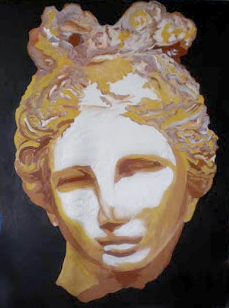Mark Aeschliman
Architecture and Design
My work expresses a timeless theme – the attainment of spiritual maturity– using imagery and materials that reference both the eternal and the ephemeral, the abstract and the representational. Perhaps these “bifurcations” reflect my bi-cultural upbringing - partly American, partly Swiss-European - with feet planted firmly in worlds both old and new.
As a European, I feel the deepest affinities with Joseph Beuys. In the late 1970’s I worked at Pasquale Trisorio’s pioneering gallery of contemporary Art in Naples. It was there that I first encountered Beuys’ vision of Art as a powerful cultural therapeutic: Beuys’ belief that art could heal the lacerations of consciousness that plagued post World War II Europe. Beuys pointed the way forward, past non-objective abstraction, towards a redemptive Art that could renew its dialogue with history. I have graduate degrees in both Art History and Italian Studies, so my understanding of the West’s iconographical legacy is complex and deep. But even back in the 1980’s I knew that history had to be approached critically, and I took to heart Beuys’ advice to Anselm Kiefer: “Maintain a dialogue with history, but do not be overwhelmed by it. Everything of the type one sees in museums has already been done.”
Like Beuys and Kiefer, I employ alchemical/esoteric symbols in my work, not as cynical gestures to “New Age” sensibilities, but instead to evoke the transmutation of matter as a metaphor for self-realization: human “individuation” in the Jungian sense, as growth towards fully developed spirituality. I deliberately employ juxtapositions – at times unions, at times collisions – of materials and concepts. And like Joseph Beuys, I manipulate materials and images in a fluid manner, referencing 20th century movements and masters as diverse as De Chirico, Rauschenberg, and Duchamp.
Duchamp in particular inspired me to exploit the pre-modern Classicaltradition as “found object”, as gold mine of “spolia” (defining spolia as “cultural detritus put to new uses”). Many of my pieces appropriate Classical epigraphic inscriptions and reproductions of canonical Classical sculptures, transposed to surfaces – shipping palettes, packing crates, rusting steel, discarded plate glass – that suggest a throwaway Modernity.
For instance, in the large photographs on found object wood (Simulacrum, Lugano, 1999) I sought to both reduce and intensify the gravity of imperial power and majesty. In the inscriptions that also featured in the next show (Coincidentia Oppositorum, Lugano 2001), I trod the same ground: ancient, pregnant messages cut from wood and laminated cardboard, hung like signposts to eternity. Like epigraphs inscribed in classical ruins, words in my Art function as objects in their own right, as well as conveyors of meaning.
In my most recent show (Berlin, 2004), I blended disparate materials and inscriptions, closely associating them with digital photographs to enable the viewer to form linkages of material, word, and symbol. Some pieces reference transitions between places (“Zurich” – “Babylon”) as metaphors for changes in consciousness. Ideally, the “transition” is simultaneously cerebral, tactile, somatic. Each viewer is free to bridge the gaps among these responses in his or her own way. I see my work as successful when it speaks poly-valently, on multiple levels.
If my work leaves viewers better able to bridge the disjunctures of time, geography, history, and sensibility; if my work intimates eternity in a world described by Foucault as “ruptured”, then I will rest content.


